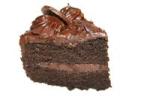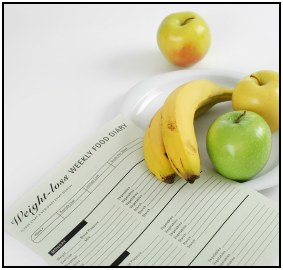Healthy Weight Loss Biography
Source:- Google.com.pkYou may well look down at your body in the months after having a baby and wonder if it's ever going to look the same again. However slim you were before, chances are you've now got a serious case of 'jelly belly' - and very likely a general weight gain over your boobs, thighs and bum, too.
This page provides some tips and reassurance on getting used to your body after pregnancy and birth, and details of gentle workouts and exercises you can try out.
What's happened to me?!
It's natural and inevitable that carrying a baby for nine months and then giving birth will have changed your body dramatically. Your abdominal muscles were stretched to the limit to accommodate your growing bump, and the extra weight elsewhere is what nature laid down in preparation for breastfeeding (combined - quite possibly - with the effects of comfort eating during pregnancy!) Also fairly inevitable is a downward turn in the chest department: as the breasts swell during pregnancy and breastfeeding, the ligaments and tissues are stretched, with saggier boobs (it's known medically as breast ptosis) the result.
So, if you're keen to get back into shape after birth, how and when should you do so? Let's face it, dieting is no fun - and definitely not a good idea if you're breastfeeding. Exercise is your best bet, combined with sensible, healthy eating. Apart from helping you shift some unwanted pounds, which will boost your confidence and self-esteem, regular activity improves your general health and fitness and is good for the mind, too, since exercise releases endorphins, the 'feel-good' hormones.
Don't enter the race
All that said, exercise is not something to be rushed into after birth. Getting back into shape is something to start when you feel ready - be it six weeks or six months down the line. And even then it should be a slow, gradual process, not the unhealthy race run by all those celebrity 'yummy mummies'. Ok so maybe, with a personal trainer, a clever stylist, a 24-hour nanny and an expensive plastic surgeon on the payroll, you too could be wearing a size-eight evening gown to your next film premiere, a mere six weeks after popping out your offspring at the Portland.
Meanwhile, back in the real world, experts agree we should allow ourselves closer to a year to get our bodies back to normal after birth, inside and out. 'It's really important to give yourself a break and not put too much pressure on yourself. It took nine months to make your baby, so give yourself at least that long to get back in shape', says Judy DiFiore, author of The Complete Guide to Postnatal Fitness, available on Amazon here, and co-founder of the buggy-based fitness franchise, Pushy Mothers (motto: 'Push, Don't Rush'!)
It's worth bearing in mind, too, that a post-baby belly is far harder to shift than any other sort - hardly surprising when you think of how far the skin and muscle was stretched during the nine months of your pregnancy. In fact, you're very likely to find that, however hard you try, your baby belly never quite shapes up the way you'd like it to - and more than likely, your breasts will never be the same again, either! 'Our bodies often change shape permanently after giving birth,' says Judy DiFiore. 'Sometimes you just have to accept that and remind yourself that, in the grand scheme of things, it's a small price to pay for the wonderful bundle you have!'
Why should we be gentle with our bodies after birth?
There are a number of very good reasons why you need to be gentle on your body after having a baby. These include:
The lingering effects of relaxin: During pregnancy, a hormone called relaxin is released which softens up the body's ligaments and muscles, in preparation for birth. The flipside of this clever bit of physiology is that it leaves us vulnerable to injury and, although it ceases once your baby's born, the effects can hang around in the body for up to five months afterwards.
Weakened abdominal muscles: All mums will suffer from these to one extent or another and, in a large majority, a condition called diastasis recti can occur naturally, when the pressure of the growing baby stretches the connective tissues between the two bands of the main tummy muscle (the rectus abdominus). It usually takes about four to six weeks for these muscles to realign - but even longer to strengthen to its original state. For this reason, Judy warns against sit-ups, crunches and other intense abdominal workouts in the four to six months after birth. If you do want to include them in your workout, at least make sure you do them properly: always pull your tummy in first, and avoid letting it bunch up as you curl and support your head with one hand to prevent neck strain. The movement should be slow and controlled, not fast and jerky - and you don't have to come up a long way off the floor for them to be effective.
Sheer exhaustion: Pregnancy, birth, breastfeeding, and the demands of caring for a newborn baby make the first year of motherhood a tiring time. Moderate, regular exercise can help boost your energy levels....but equally, overdoing it will just set you back. Go easy on yourself - if you've had a bad night, or you're just too tired, leave your exercise routine for another day.
Safe from the start
Vital as it is to wait a while before you begin exercising in earnest, it's possible to make a very gentle start on regaining some strength in your body right after birth. In fact, there's one bit of the body that all new mums should be exercising regularly: the pelvic floor (the hammock-like layer of muscles that support the bladder, uterus, and bowel). If you were good, you'll have done your pelvic floor exercises during pregnancy. If not, don't let that stop you from starting now - they're all-important in the battle to keep leaky bladders at bay and, as an added bonus, can help to improve satisfaction during sex! Find out how to do pelvic floor exercises here.
You can also make a start on the long, slow process of getting your tummy muscles back in shape by softly pulling them in whenever you get the chance. (If you're not sure how, imagine drawing your tummy in towards your spine.) Hold for a few seconds, breathing all the while, and then release. Do this as many times a day as you can fit in. (It's also a good idea to hold in your tummy in this way when you bend over or lift anything: it will help to support your back and so help to ease or prevent back pain, a common problem after birth.) You could also squeeze in a few pelvic tilts when you find yourself with a free moment: stand with your back to a wall, slide a hand into the gap between your lower back and the wall and use your tummy muscles to tilt your pelvis backwards. Hold for a little while before releasing. You'll know you're doing it right if you can feel your lower back pushing against your hand.
Gentle walking is also ok in the early weeks - you'll probably be getting out and about with your baby in a sling or pram, anyway. But even this can be exerting while you're still recovering, so take care not to go to far or to walk too fast. Slow down or stop if you feel breathless, dizzy, or plain exhausted. Wearing trainers is a good idea, even for a gentle stroll.
Ready to get going?
If you're keen to make a more determined start on getting back in shape as soon as possible, it will usually be OK to do so from around six weeks (ten weeks if you had a C-section). Do get the go-ahead from your GP, first. Even then, it's vital to take great care, as your body is still very much in recovery.
To burn off your baby fat, you need to increase your heart rate and get breathless (as well as a little bit sweaty!) for 20-30 minutes, three or more times a week. However, it's advisable to avoid 'high-impact' activities such as running for a while, because your ligaments and joints are still vulnerable. As a general rule, Judy DiFiore recommends waiting six to nine months before going for a run, or any other high-impact exercise class or sport, unless you were very proficient at it before the birth (in which case you probably don't have to wait that long - but you should still take great care to let your body lead you when you do pick it up again). Who needs to pound the pavement, anyway? There are lots of other, safer forms of exercise you can try, including:
Power walking: An ideal way for new mums to exercise as it can be fitted it into a normal day. If you take your baby in the buggy, you won't need a babysitter - and you'll increase the intensity of the workout, too. Take a tip from Judy, who teaches Pushy Mothers buggy workout sessions and keep an eye on your posture while out and about with your baby. 'We tell mums in our classes to walk tall with relaxed shoulders, elbows and wrists,' she reveals. 'Lengthen your stride to give your legs and buttocks a really good workout and keep up a good pace. For higher intensity workouts take a hilly route or push your buggy across rough terrain, but ensure you keep ‘hips to handles' to avoid straining the back. If you've had a c-section, though, don't try this until you're satisfied your wound is healed.'
Pilates or yoga: These are great for improving strength and flexibility, but you'll still need to raise your heartbeat with some sort of aerobic exercise a couple of times a week if you want to burn off that belly. (A combination of the two will work a treat). Some moves in pilates are intense and may not be suitable, so do make sure your instructor is qualified and alert them to the fact that you're a new mum when you start.
Swimming, or aquarobics: A perfect all-round exercise - it will increase your heart rate but as the water offers you support, has mimimal risk of injury. It's also good for firming up post-baby boobs. Take care to keep your head down if you're doing breaststroke, though - holding it up can put a strain on your neck and lower back.
Exercise classes: These vary in their intensity, so stick to one specifically designed for postnatal women, such as Pushy Mothers. (Find out more about what's in your area by checking out your local boards, or visiting the website of The Guild of Pregnancy and Postnatal Exercise Instructors. At the very least make sure you go for one that's 'low-impact' - that means anything where you've always got one foot on the floor. If in doubt, ask the instructor first, and make sure they know you're a new mum - often, there'll be lower-impact alternatives to some of the moves that are more suitable for you.
Find out about local exercise classes here
Finally, before you work out, don't forget:
To wear a decent pair of trainers (don't forget that your feet can increase in size during pregnancy, so go to a reputable sports shop and get yourself measured and buy a new pair if necessary.)
To wear a well-fitting sports bra, or two if you need more support. (If you're breastfeeding, feed your baby beforehand to avoid leakage, and pop in a couple of breastpads, just in case.)
To keep yourself well hydrated during and afterwards. Don't be tempted to avoid fluids if you've got leaky bladder issues: keep drinking (but step up the pelvic floor exercises!)
To exercise under the watchful eye of a qualified instructor wherever possible. If you attend a class, check out the credentials of whoever's running it. And if you are working out at home, perhaps following a DVD, make sure you've got the moves right: do them wrong and at best they'll be useless to you, at worst, harmful.
Healthy Weight Loss Weight Loss Tips Tumblr For Women In Urdu By Dr Khurram In Urdu By Zubaida Tariq Urdu In Urdu For Girls And Tricks In Urdu By Doctor Khurram

Healthy Weight Loss Weight Loss Tips Tumblr For Women In Urdu By Dr Khurram In Urdu By Zubaida Tariq Urdu In Urdu For Girls And Tricks In Urdu By Doctor Khurram

Healthy Weight Loss Weight Loss Tips Tumblr For Women In Urdu By Dr Khurram In Urdu By Zubaida Tariq Urdu In Urdu For Girls And Tricks In Urdu By Doctor Khurram

Healthy Weight Loss Weight Loss Tips Tumblr For Women In Urdu By Dr Khurram In Urdu By Zubaida Tariq Urdu In Urdu For Girls And Tricks In Urdu By Doctor Khurram

Healthy Weight Loss Weight Loss Tips Tumblr For Women In Urdu By Dr Khurram In Urdu By Zubaida Tariq Urdu In Urdu For Girls And Tricks In Urdu By Doctor Khurram

Healthy Weight Loss Weight Loss Tips Tumblr For Women In Urdu By Dr Khurram In Urdu By Zubaida Tariq Urdu In Urdu For Girls And Tricks In Urdu By Doctor Khurram

Healthy Weight Loss Weight Loss Tips Tumblr For Women In Urdu By Dr Khurram In Urdu By Zubaida Tariq Urdu In Urdu For Girls And Tricks In Urdu By Doctor Khurram

Healthy Weight Loss Weight Loss Tips Tumblr For Women In Urdu By Dr Khurram In Urdu By Zubaida Tariq Urdu In Urdu For Girls And Tricks In Urdu By Doctor Khurram

Healthy Weight Loss Weight Loss Tips Tumblr For Women In Urdu By Dr Khurram In Urdu By Zubaida Tariq Urdu In Urdu For Girls And Tricks In Urdu By Doctor Khurram

Healthy Weight Loss Weight Loss Tips Tumblr For Women In Urdu By Dr Khurram In Urdu By Zubaida Tariq Urdu In Urdu For Girls And Tricks In Urdu By Doctor Khurram

Healthy Weight Loss Weight Loss Tips Tumblr For Women In Urdu By Dr Khurram In Urdu By Zubaida Tariq Urdu In Urdu For Girls And Tricks In Urdu By Doctor Khurram

Healthy Weight Loss Weight Loss Tips Tumblr For Women In Urdu By Dr Khurram In Urdu By Zubaida Tariq Urdu In Urdu For Girls And Tricks In Urdu By Doctor Khurram

Healthy Weight Loss Weight Loss Tips Tumblr For Women In Urdu By Dr Khurram In Urdu By Zubaida Tariq Urdu In Urdu For Girls And Tricks In Urdu By Doctor Khurram

Healthy Weight Loss Weight Loss Tips Tumblr For Women In Urdu By Dr Khurram In Urdu By Zubaida Tariq Urdu In Urdu For Girls And Tricks In Urdu By Doctor Khurram

Healthy Weight Loss Weight Loss Tips Tumblr For Women In Urdu By Dr Khurram In Urdu By Zubaida Tariq Urdu In Urdu For Girls And Tricks In Urdu By Doctor Khurram

Healthy Weight Loss Weight Loss Tips Tumblr For Women In Urdu By Dr Khurram In Urdu By Zubaida Tariq Urdu In Urdu For Girls And Tricks In Urdu By Doctor Khurram

No comments:
Post a Comment